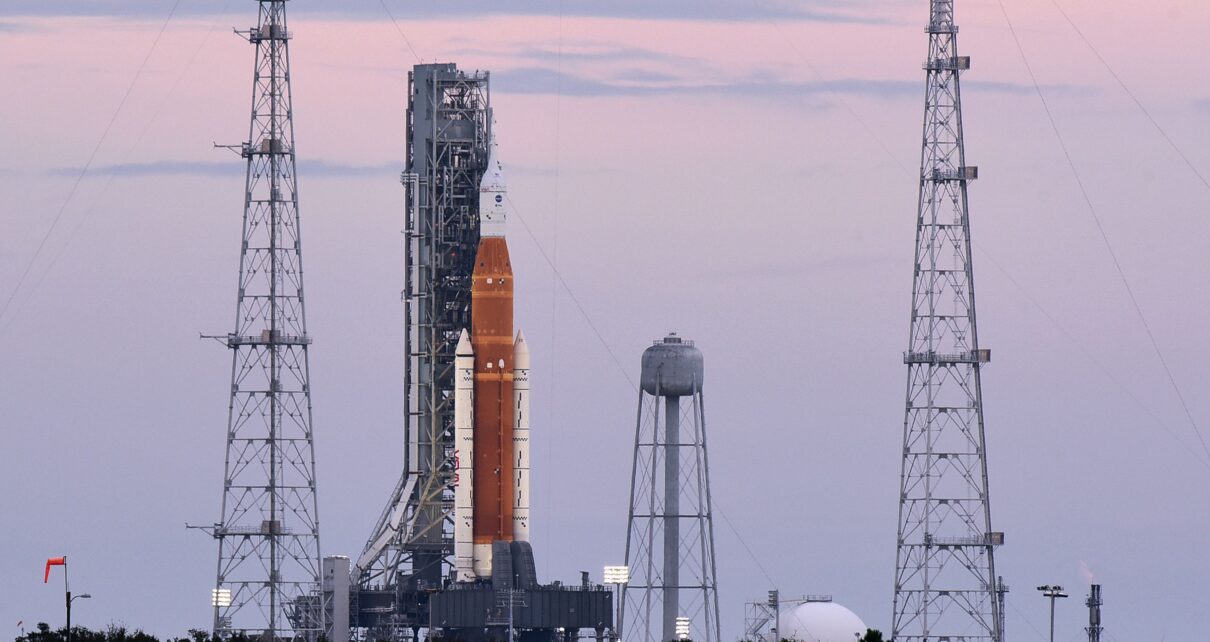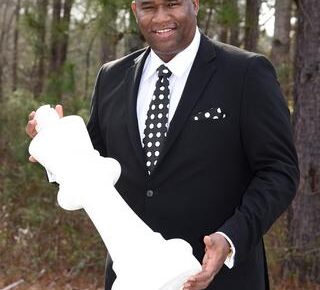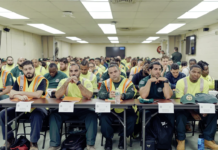The White House has convened a last-minute meeting to discuss a private mission to the moon — set to launch in days — after the largest group of Native Americans in the United States asked the administration to delay the flight because it will be carrying cremated human remains destined for a lunar burial.
If successful, the commercial mission scheduled to launch Monday — dubbed Peregrine Mission One — will be the first time an American-made spacecraft has landed on the lunar surface since the end of the Apollo program in 1972. But Navajo Nation President Buu Nygren said that allowing the remains to touch down there would be an affront to many indigenous cultures, which revere the moon.
“The moon holds a sacred place in Navajo cosmology,” Nygren said in a Thursday statement. “The suggestion of transforming it into a resting place for human remains is deeply disturbing and unacceptable to our people and many other tribal nations.”
The private companies providing these lunar burial services, Celestis and Elysium Space, are just two of several paying customers hitching a ride to the moon on Pittsburgh-based Astrobotic Technology’s Peregrine lunar lander. The uncrewed spacecraft is expected to lift off on the inaugural flight of the United Launch Alliance’s Vulcan Centaur rocket from Florida’s Cape Canaveral Space Force Station.
Celestis’ payload, called Tranquility Flight, includes 66 “memorial capsules” containing “cremated remains and DNA,” which will remain on the lunar surface “as a permanent tribute to the intrepid souls who never stopped reaching for the stars,” according to the company’s website.
“We are aware of the concerns expressed by Mr. Nygren, but do not find them substantive,” Celestis CEO Charles Chafer told CNN.
“We reject the assertion that our memorial spaceflight mission desecrates the moon,” Chafer said. “Just as permanent memorials for deceased are present all over planet Earth and not considered desecration, our memorial on the moon is handled with care and reverence, is a permanent monument that does not intentionally eject flight capsules on the moon. It is a touching and
fitting celebration for our participants — the exact opposite of desecration, it is a celebration.”

The Navajo Nation Office of the President
Elysium Space has not responded to CNN’s request for a comment, but the company’s website describes its “Lunar Memorial” as delivering “a symbolic portion of remains to the surface of the Moon, helping to create the quintessential commemoration.”
“I’ve been disappointed that this conversation came up so late in the game,” John Thornton, Astrobotic Technology CEO, said. “I would have liked to have had this conversation a long time ago. We announced the first payload manifest of this nature to our mission back in 2015. A second in 2020. We really are trying to do the right thing and I hope we can find a good path forward with Navajo Nation.”
Dawn of the lunar economy
This isn’t the first time Navajo Nation has expressed concerns about burials on the moon. In a December letter to NASA Administrator Bill Nelson and Transportation Secretary Pete Buttigieg, Nygren referred back to NASA’s Lunar Prospector mission, which in 1999 deliberately crashed a spacecraft into the moon carrying the remains of former astronaut Eugene Shoemaker.
“At the time, Navajo Nation President Albert Hale voiced our objections regarding this action. In response, NASA issued a formal apology and promised consultation with tribes before authorizing any further missions carrying human remains to the Moon,” Nygren said.
While NASA is the primary customer on this mission, it’s still one customer among many paying to put technology and cargo on Astrobotic’s lunar lander.

Astrobotic Technology
The space agency paid Astrobotic $108 million to develop the lander and carry science experiments to the moon, said Sandra Connelly, deputy associate administrator of NASA’s science mission directorate in a Friday press call. The space agency also developed the Artemis Accords, a document that outlines what should and shouldn’t be allowed on the moon that has been signed by the US and 32 of its allies.
“We recognize that some non-NASA commercial payloads can be a cause for concern to some communities, and those communities may not understand that these missions are commercial. They’re not US government missions,” said Dr. Joel Kearns, NASA deputy associate administrator for exploration.

United States announces plan to land international astronaut on the moon
Peregrine Mission One marks the start of NASA’s Commercial Lunar Payload Services, or CLPS, initiative, which allows the US space agency to outsource the launch and transport of its lunar cargo to private companies. The mission is at the dawn of the lunar economy, and the rules are still evolving.
“American companies bringing equipment and cargo and payloads to the moon is a totally new industry — a nascent industry — where everyone is learning,” Kearns said. “We take concerns expressed from the Navajo Nation very, very seriously.
Nygren, who represents the roughly 430,000 enrolled members of the Navajo Nation, says the tribe is “not opposed to scientific progress or space exploration” but continues to hold “profound concerns regarding the lack of oversight and regulation of non-NASA commercial payloads, particularly when such payloads include human remains.
Who controls the moon?
The Federal Aviation Administration’s Office of Commercial Space Transportation is responsible for licensing all private space launches in the US. But by law, the office only has oversight in matters involving “the public health and safety, safety of property, and national security and foreign policy interests of the United States.”
“The Federal Aviation Administration’s role is statutorily limited to ensuring space flights do not pose a safety or national security threat to the United States,” a Department of Transportation spokesperson told CNN.
But the executive director for the Navajo Nation’s Washington Office, Justin Ahasteen, calls that argument “absurd.”
“They’re essentially suggesting that you can send anything into space. Does that mean people can send drugs? Does that mean people can send hazardous material? The lack of oversight is, I think, really concerning for the nation,” Ahasteen told CNN.

Astrobotic Technology
The debate raises new questions at the dawn of a race to colonize the moon about who controls Earth’s only natural satellite.
“No one, and no religion, owns the moon,” Celestis’ CEO told CNN. “If the beliefs of the world’s multitude of religions were considered, it’s quite likely that no missions would ever be approved. Simply put, we do not and never have let religious beliefs dictate humanity’s space efforts. There is not and should not be a religious test.”
Ahasteen argues that Navajo Nation’s intent isn’t to claim the moon.

NASA laser message beams video of a cat named Taters back to Earth, and it’s a big deal
“We’re saying be respectful. We’re turning the moon into a graveyard and we’re turning it into a waste site,” Ahasteen said. “At what point are we going to stop and say we need to start protecting the moon as we do the Grand Canyon?”
Friday’s meeting convened by the White House is scheduled to feature representatives from NASA, the FAA, the US Department of Transportation, and the Department of Commerce. But Navajo Nation officials have little hope that they will be able to stop Monday’s launch.
“Based off of what we’re seeing, and NASA are already having their pre-launch briefing, it doesn’t look like they have any intention of stopping the launch or removing the remains,” Ahasteen said.







